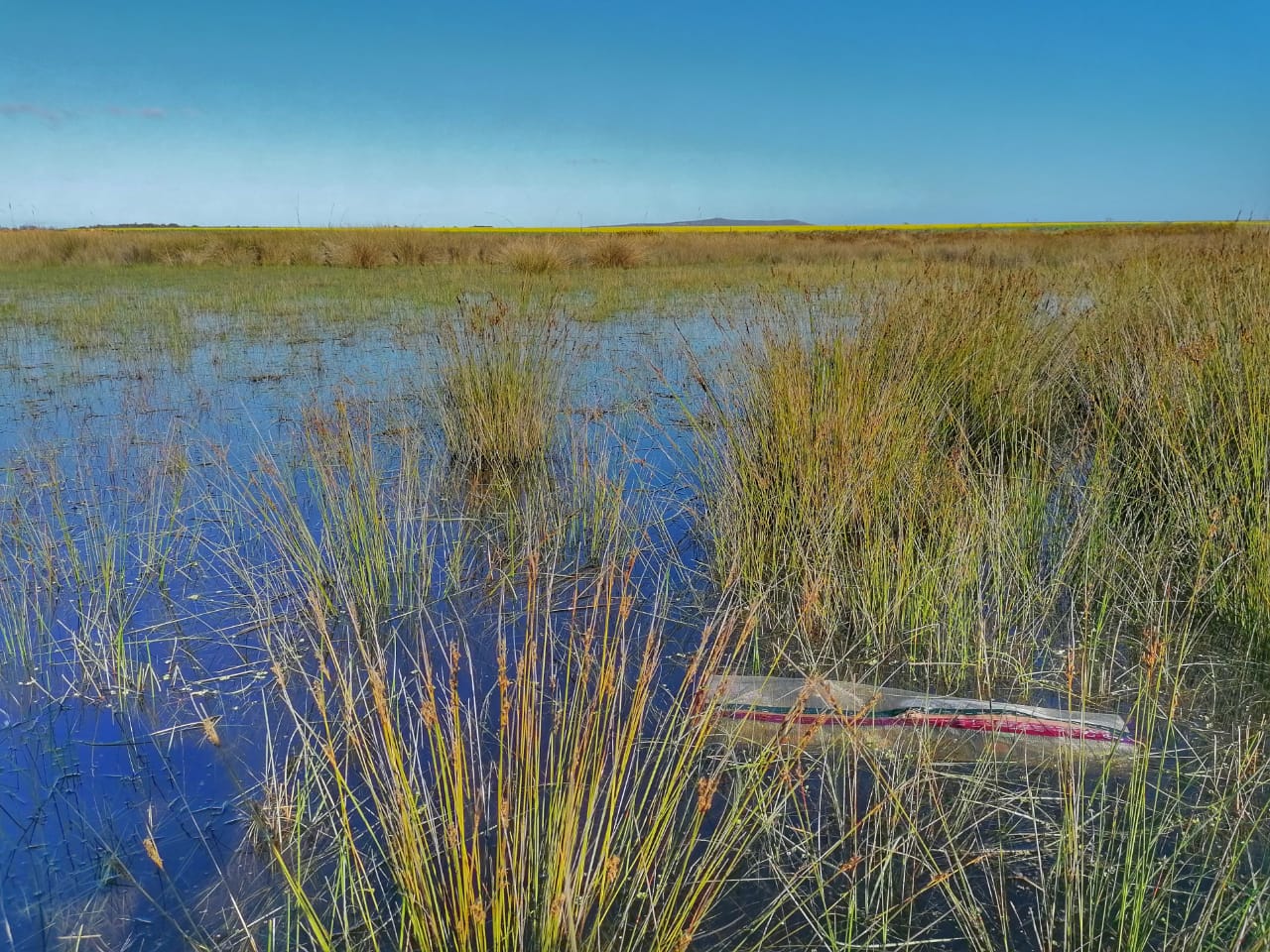In a bid to better understand the distribution and threats facing several highly threatened and endemic amphibians, the Endangered Wildlife Trust’s (EWT) Threatened Amphibian Programme (TAP) recently launched a project in the Western Cape, focusing on five of the most range-restricted frogs of the region. This work is being done in partnership with the Bionerds, supported by the Whitley Fund for Nature and the Amphibian Survival Alliance. Still in its infancy, this work has already yielded promising results where, using distribution modelling and a survey technique developed by the EWT’s Conservation Science Unit, the field experts at Bionerds have confirmed two new localities for the Endangered Cape Platanna (Xenopus gilli) – expanding the known range for this acidic, black-water, specialist of the Cape lowlands.
The project also includes the Rough Moss Frog (Arthroleptella rugosa), the Micro Frog (Microbatrachella capensis), and the newly described Moonlight Mountain Toadlet (Capensibufo selenophos) – all Critically Endangered. We have also included the Endangered Cape Platanna and Western Leopard Toad (Sclerophrys pantherina) into survey work, as these often occur sympatrically with the Micro Frog. All are situated within the centre of endemism of the Cape Floristic Region, home to some of South Africa’s most unique, and threatened frog species. The Rough Moss Frog has a tiny range of 0.9 km2, making it very vulnerable to threats such as alien and invasive plants and fire. The distribution of the Micro Frog, occurring at just four localities across seven km2, is highly fragmented and impacted by urbanization, agricultural expansion, the spread of alien vegetation, and drainage of breeding habitats. The distribution of the Moonlight Mountain Toadlet is not well understood, although the proliferation of alien and invasive plants poses a severe threat to the species. Urgent, targeted habitat protection and management at key sites will benefit all three species.
The broad project objectives are to:
1. Improve understanding of the distribution of each target species, and to quantify this.
2. Identify and quantify key threats to inform conservation actions.
3. Identify formal habitat protection mechanisms and initiate landowner engagement, to secure critical habitat for these species.
Fieldwork started in late July, with field surveys being carried out on the Agulhas Plain for both the Cape Platanna and the Micro Frog. We arranged access to relevant sites with the Nuwejaars Wetland Special Management Area (SMA), and made amphibian funnel traps that were deployed at each site over two nights. The surveys are based on the distribution models developed by the EWT.
Sound recordings were made at wetlands in the survey area and assisted in identifying the Micro Frog, which could be heard actively calling in the background. Other species identified during the initial survey include Cape River Frog (Amietia fuscigulaI), Clicking Stream Frog (Strongylopus grayii), Southern Caco (Cacosternum australis), Cape Sand Frog (Tomopterna delalandii), Rattling Frog (Semnodactylus wealii), Arum Lily Frog (Hyperolius horstockii), and Common Platanna (Xenopus laevis).
South Africa allows for the formal, long-term protection of habitat through mechanisms including biodiversity stewardship and servitudes, which we plan to implement in this project, based on data that proves the importance of protecting various sites for the long-term protection of this threatened species.
This work shows the value and importance of integrating sound science and conservation action, and working in cohesive partnerships, in protecting forever, together. We would like to thank our donors and the Nuwejaars SMA for facilitating this work.
Photo © Keir & Alouise Lynch
About the Endangered Wildlife Trust
The Endangered Wildlife Trust (EWT) has worked tirelessly for nearly 50 years to save wildlife and habitats, with our vision being a world in which both humans and wildlife prosper in harmony with nature. From the smallest frog, to the majestic rhino; from sweeping grasslands to arid drylands; from our shorelines to winding rivers: the EWT is working with you, to protect our world.
The EWT’s team of field-based specialists works across southern and East Africa, where committed conservation action is needed the most. Working with our partners, including businesses and governments, the EWT is at the forefront of conducting applied research, supporting community conservation and livelihoods, training and building capacity, addressing human wildlife conflict, monitoring threatened species and establishing safe spaces for wildlife range expansion.
A beacon of hope for Africa’s wildlife, landscapes and communities, the EWT is protecting forever, together. Find out more at www.ewt.org.za

